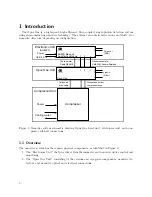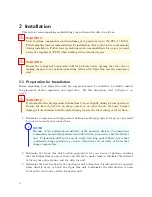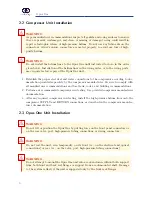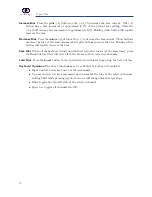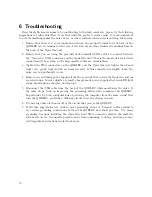
Opus One
N
ANOWIRE
BIAS
AND
READOUT
ELECTRONICS
Quantum Opus, LLC
Novi, Michigan, USA
Tel
: +1 269 248 1004
QuantumOpus.com
Copyright © 2019 by Quantum Opus, LLC
Typical System Specifications
3dB Amplifier
Bandwidth
Gain
Jitter
Contribution
AC Input/Output
Impedance
DC Bias
Impedance
750 MHz
58 dB (500 MHz)
50 dB (1 Ghz)
< 40 ps
50 Ω
100 kΩ
Bias Current
Resolution
Maximum
Bias Current
Current Noise
f > 10 Hz
Current Noise
(1−100Hz)
Current Noise
(1−10 Hz)
10 bit
50 µA
< 5 pA/rtHz
65 pA
RMS
40 pA
RMS
Key Features:
Up to 16 channels per 1U rack-size module
Provides direct, room-temperature
amplification of raw detector outputs
Low jitter contribution
10-bit low-noise bias current source for
nanowire detectors
Non-volatile memory for storage/recall of bias
current values on all channels
No special drivers needed: Simple text-based
USB 2.0 CDC serial communication.
Fanless design for reliability and low noise
Example control software provided with
assistance for custom software control
Integrated two-channel diode thermometer
readout
Analog pulse output standard, TTL output
available
100-240VAC, 50-60Hz, 1.2A input
millimeters [inches]
Front and back views of 16-channel
electronics module
Figure 4: A typical 16-channel Quantum Opus SNSPD Control and Readout Electronics
(QOELEC) module. Configuration may vary by system.
5. Plug in the provided power supply to the back of the QOELEC and turn the power on.
The power indicator light near the power switch will turn on. The light will be orange if
no valid USB connection is made to the unit, and green if a valid connection is made. All
connections should be left in place when powering up and powering down the QOELEC.
Therefore, any changes made to the cabling should be made with the QOELEC powered
OFF.
13






